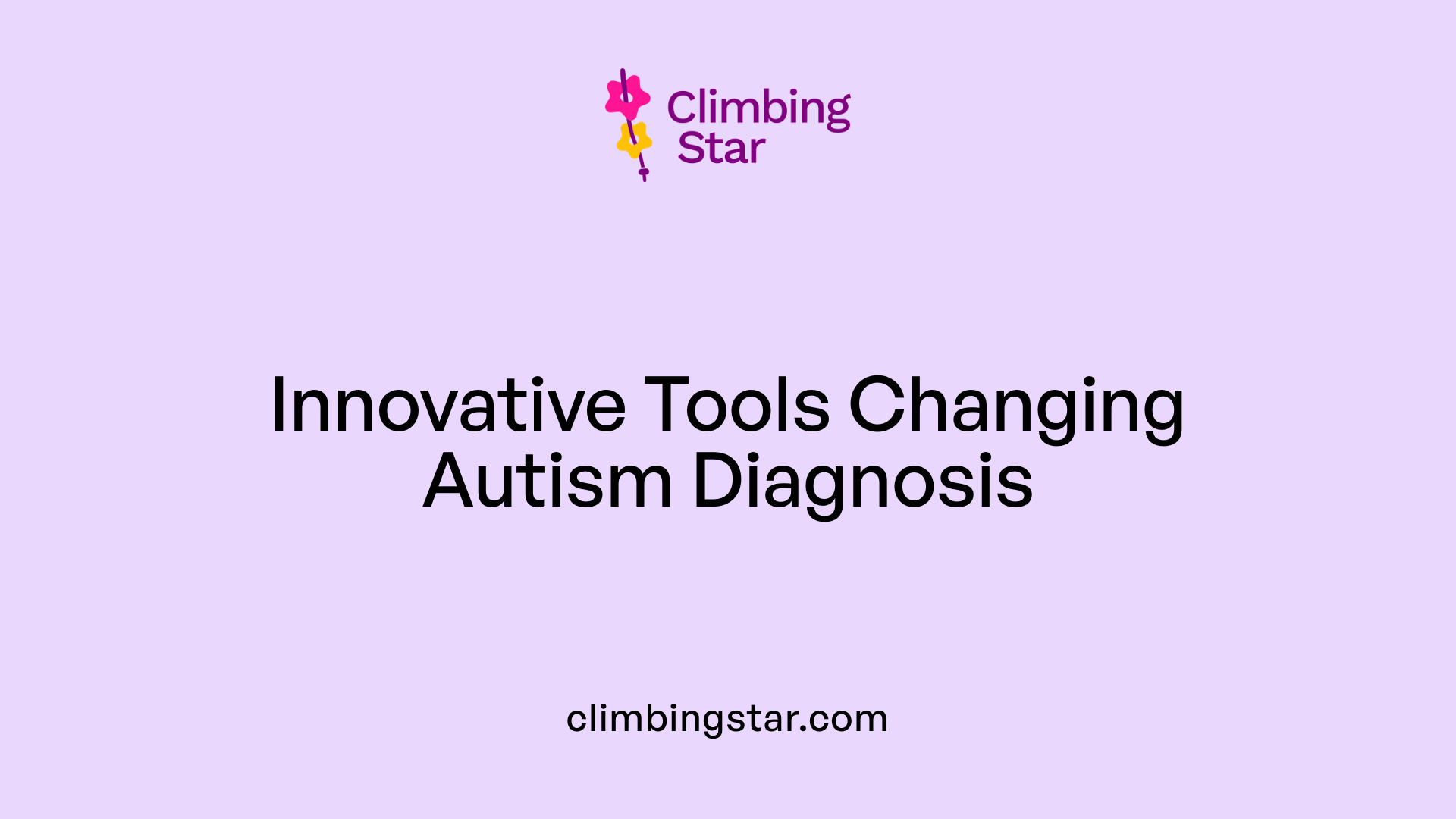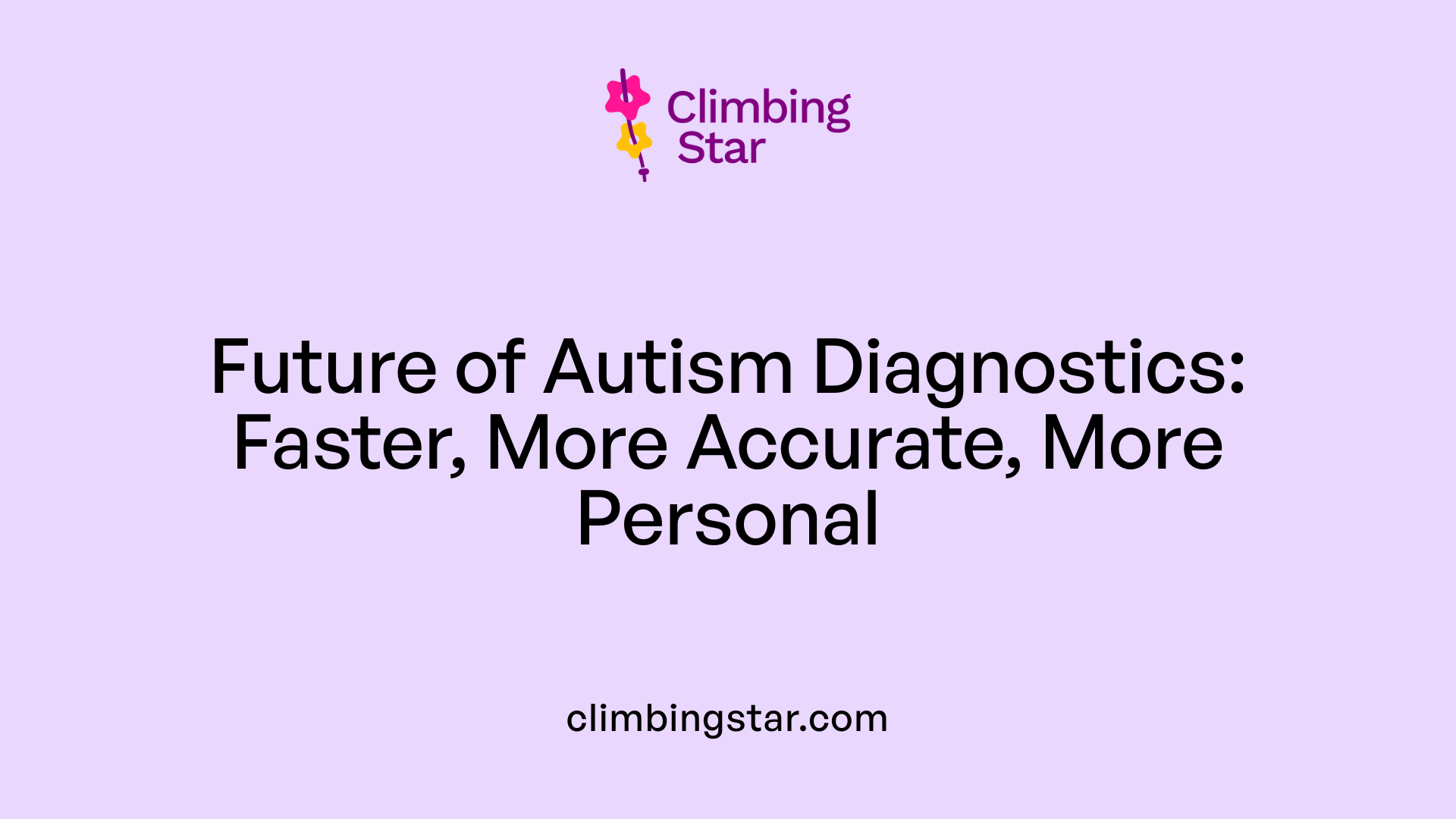Understanding Online Autism Testing: What You Need to Know
With the rise of digital health tools, many parents and caregivers turn to online autism tests as a quick way to assess potential concerns. However, the accuracy, reliability, and appropriate role of these tools in the diagnostic process remain complex. This article explores the nature of online autism screening, examines recent advances, and highlights why professional evaluation remains essential.
The Role and Limitations of Online Autism Tests as Screening Tools

What is the difference between screening and diagnostic tools?
Online autism tests primarily serve as screening tools, not definitive means of diagnosis. Screening tools are designed to identify individuals who may have autism and alert caregivers or professionals to the need for further evaluation. These tests usually involve questionnaires or brief observations, such as the M-CHAT-R/F, to detect early signs like communication challenges, repetitive behaviors, or social difficulties.
Diagnostic tools, by contrast, involve comprehensive assessments conducted by trained healthcare providers. They include detailed developmental histories, behavioral observations, and standardized diagnostic instruments like the Autism Diagnostic Observation Schedule (ADOS-2). These assessments confirm whether a person meets the criteria for autism spectrum disorder (ASD).
Online screening tools are accessible and quick, making them valuable for initial detection. However, they do not substitute for full diagnostic evaluations, which are essential for accurate diagnosis and personalized treatment planning.
What are the limitations of online tests, including false positives and negatives?
Online autism tests have notable limitations that can influence their reliability and usefulness. One common issue is the potential for false positives—where the test suggests autism when there is none. This can lead to unnecessary anxiety and further testing.
Conversely, false negatives occur when a screening misses signs of autism, leading caregivers to believe their child is developing typically when they are not. Such false negatives can delay necessary interventions.
Online tests are also sensitive to how questions are answered, which can be affected by misunderstandings, environmental factors, or the person’s communication abilities during assessments.
Furthermore, any online assessment may not fully capture the nuances of social interactions and communication behaviors that are critical for diagnosis. Video-based assessments or homemade tests do not meet the standards of clinically validated tools like ADOS-2.
Why is professional assessment following screening so vital?
Because online tools cannot definitively diagnose autism, a thorough in-person evaluation remains essential. Healthcare professionals rely on detailed developmental histories, behavioral observations, and validated diagnostic tools to make accurate diagnoses.
Professional assessments can account for cultural, linguistic, and individual differences that online tests might overlook. They also provide an opportunity to observe non-verbal cues, social interactions, and communication skills in real-life settings—elements difficult to accurately assess through videos or questionnaires.
The Autism Service emphasizes that no matter how promising an online screening might be, it cannot replace face-to-face evaluations. An accurate diagnosis forms the foundation for effective intervention and support, underscoring the importance of consulting qualified professionals after any screening.
| Aspect | Online Screening Tools | Professional Diagnostic Assessments | Details/Comments |
|---|---|---|---|
| Purpose | Early identification of potential signs | Confirm diagnosis, understand severity | Screening prompts further evaluation; diagnosis is comprehensive |
| Reliability and Validity | Varies; some tools acceptable, others less so | High; standardized and validated | Professional tools and expertise ensure accuracy |
| Accuracy (False Positives) | Potential for false positives | Minimized; based on detailed evaluation | Reduces unnecessary concern but not foolproof |
| Accuracy (False Negatives) | Possible missed cases | Less likely; comprehensive observation | Critical to avoid missed diagnoses |
| Convenience | Highly accessible, quick | Time-consuming, requires trained professionals | Offers initial insights but not definitive diagnosis |
| Suitability for Diagnosing | Not suitable; used for screening only | Essential for accurate diagnosis | Should complement, not replace professional assessment |
This overview underscores that while online autism tests can be helpful for initial screening, they are imperfect tools. The most reliable diagnosis involves thorough, face-to-face evaluations by experienced clinicians.
Early Detection and the Promise of Advanced Technologies

Can online tests assist in early screening or identifying the need for further assessment?
Online screening tools for autism, such as the Modified Checklist for Autism in Toddlers (M-CHAT-R) and Childhood Asperger Syndrome Test (CAST), are valuable resources for initial detection of potential autism traits. These questionnaires are simple, accessible, and anonymous, allowing parents and caregivers to recognize early signs that might suggest the need for professional evaluation.
While online screens are not diagnostic tools, they can prompt timely medical consultations, especially when symptoms are suspected. They serve as an entry point into the diagnostic process by highlighting concerns related to communication, social interaction, and behavior. Early detection through these tools is crucial because it allows children to access supportive interventions sooner, significantly improving developmental outcomes.
In essence, online screening acts as a preliminary step, helping families and healthcare providers identify who might benefit from more thorough assessments. This approach ensures that children at risk are prioritized for comprehensive evaluation by specialists.
How do recent advances influence the assessment process?
Recent technological advances are transforming autism diagnostics, making them faster, more accurate, and more accessible. Researchers at Harvard Medical School, for instance, have developed a rapid, web-based diagnostic tool that employs machine learning algorithms. This method drastically reduces assessment time from hours to just minutes.
This innovative approach combines a small set of targeted questions with a short home video to evaluate autism risk effectively. Validation studies demonstrated that only seven questions from the Autism Diagnostic Interview-Revised (ADI-R) could diagnose autism with nearly 100% accuracy, comparable to the full questionnaire. Similarly, analysis applied to the Autism Diagnostic Observation Schedule (ADOS) achieved near-perfect sensitivity and about 95% specificity.
Beyond behavioral questionnaires, advances include the use of neuroimaging techniques like functional magnetic resonance imaging (fMRI) and diffusion tensor imaging (DTI). These tools identify neurobiological markers associated with ASD. Genetic testing further complements behavioral assessments by detecting genetic variations linked to autism.
Behavioral assessments are also enhanced through digital tools such as eye-tracking and touchscreen-based interactions, offering rapid, non-invasive screening, particularly in young children. Machine learning models analyze complex data from these sources, enabling more precise classification of autism subtypes and earlier diagnosis.
These developments not only improve diagnostic accuracy but also facilitate earlier intervention, which is vital for better developmental outcomes. However, challenges remain, including the need for validation in diverse populations, ethical considerations, and integration into standard clinical workflows.
What about biomarker-based diagnostics such as neuroimaging and genetic testing?
Biomarker-based diagnostics hold promise for the future of autism assessment. Neuroimaging techniques can reveal brain activity patterns and structural differences associated with ASD, providing objective data to support behavioral observations.
Genetic testing identifies specific genetic variations and mutations linked to autism, offering a molecular perspective that complements other assessment tools.
Despite their potential, these biomarker-based methods are currently used mainly in research settings. They are not yet standard in clinical practice mainly due to high costs, limited accessibility, and the need for further validation.
The integration of neuroimaging and genetic testing into the diagnostic process could lead to more precise and earlier diagnoses. This would allow interventions to be tailored to the individual's biological profile, possibly improving treatment outcomes.
| Diagnostic Approach | Tools/Methods | Main Advantages | Challenges |
|---|---|---|---|
| Behavioral Screening | Questionnaires (e.g., M-CHAT-R, ADOS) | Easy, quick, accessible | Not definitive, needs follow-up |
| Digital & Machine Learning | Home videos, touchscreen tasks, AI algorithms | Rapid, high accuracy, early detection | Validation, ethical issues |
| Neurobiological Measures | fMRI, DTI | Objective, biological markers | High cost, limited availability |
| Genetic Testing | DNA analysis | Molecular insights | Not standalone, complex interpretation |
In summary, a combination of behavioral assessments, technological innovations, and biological markers is shaping a more precise and timely approach to autism diagnosis, moving toward a future where assessments are faster, less invasive, and more accessible.
Why Professional Evaluation Is Crucial
Why is professional evaluation essential for diagnosing autism?
Diagnosing autism spectrum disorder (ASD) requires a thorough and nuanced approach that goes beyond what online tests or quick screening tools can offer. A comprehensive assessment involves examining an individual’s developmental history, behaviors, and communication skills. Trained clinicians utilize a combination of standardized diagnostic tools, clinical observations, detailed interviews, and reports from family members or caregivers. This multi-faceted process helps to accurately identify whether an individual meets the criteria for autism.
One of the main limitations of online assessments is their inability to capture the subtle social interaction cues that are crucial in autism diagnosis. Autism affects communication and social behaviors in complex ways that are often best observed directly. Video calls or online questionnaires cannot fully replicate the depth of in-person interaction, which can lead to inaccuracies. For example, nuances such as eye contact, joint attention, and adaptive social responses are difficult to assess reliably through virtual means.
Standardized testing and professional judgment are vital components of an accurate diagnosis. Tools like ADOS-2 and ADI-R have been validated through extensive research and are administered by trained professionals. These assessments allow clinicians to interpret behaviors within the context of developmental history and current presentation. They provide a structured and reliable framework for understanding complex behaviors, reducing the risk of misdiagnosis.
When a diagnosis is confirmed by a qualified clinician, it opens doors to tailored interventions, therapies, and support systems. It also provides clarity and relief to individuals and families trying to understand their experiences. Misdiagnoses or missed diagnoses can delay access to important services and affect long-term outcomes.
| Aspect | Explanation | Why It Matters |
|---|---|---|
| Developmental history | A detailed record of early development and milestones | Detects early signs and clarifies symptom onset |
| Behavior observation | Direct assessment of social, communication, and repetitive behaviors | Ensures behaviors are interpreted in context |
| Communication skills | Evaluation of language, social interaction, and adaptive functioning | Identifies communication challenges and needs |
| Standardized tools | Validated instruments like ADOS-2 and ADI-R | Provide objective, comparable results |
| Professional judgment | Integrating all information, clinical experience, and expertise | Ensures nuanced and accurate diagnosis |
In summary, a professional assessment remains the gold standard in autism diagnosis. While screening tools and online questionnaires can help alert caregivers to potential concerns, they cannot replace the detailed, nuanced, and personalized approach offered by trained clinicians. This process not only confirms the diagnosis but also guides effective intervention strategies, ultimately improving the quality of life for individuals on the spectrum.
Implications and Future of Diagnostic Tools in Autism Spectrum Disorder

How do advances in autism diagnostic technologies impact the assessment process?
Recent technological breakthroughs are transforming the way autism spectrum disorder (ASD) is diagnosed. Traditional methods, which depend on comprehensive behavioral evaluations, interviews, and developmental history, remain the core of diagnosis. However, researchers are now developing sophisticated tools that provide additional insights, often with greater speed and objectivity.
One notable development is the use of neuroimaging techniques such as functional magnetic resonance imaging (fMRI), structural MRI, and diffusion tensor imaging. These methods help identify neurobiological markers associated with ASD, making it possible to detect signs of autism earlier and more accurately.
Genetic testing is also gaining prominence. Although it cannot yet diagnose autism definitively, identifying genetic variants linked to ASD enhances understanding of the condition's biological basis. Similarly, EEG combined with machine learning algorithms is being explored to discern neural activity patterns associated with autism, offering a non-invasive and rapid assessment option.
Behavioral assessments are evolving with digital tools. Eye-tracking technologies and touchscreen-based behavior analysis can observe and quantify social attention and interaction skills without invasive procedures. These innovations enable early screening, which is crucial for timely intervention.
Machine learning models analyze complex datasets drawn from neuroimaging, genetics, and behavioral metrics. Supervised algorithms classify autism subtypes with higher precision, supporting tailored treatment plans. Unsupervised models help discover new patterns or subgroups within ASD, fostering personalized approaches.
Despite these advances, integrating such tools into routine clinical practices encounters obstacles like the need for extensive validation, high costs, and equitable access. Ensuring reliability across diverse populations and settings remains a challenge. Nonetheless, these developments promise a future where autism can be detected earlier, more accurately, and in a way that informs individualized support strategies.
What is the role of technological validation and clinical integration?
Validation studies are crucial to confirm that these new tools provide accurate and reliable diagnoses comparable to established methods like ADOS-2 and ADI-R. For example, recent research demonstrated that simplified questionnaires and short home videos analyzed with machine learning can diagnose autism with nearly 100% accuracy, akin to full assessments.
The potential for integrating rapid, digital screening tools into routine child health assessments is significant. These tools could be employed during regular pediatric visits or at home, allowing for earlier detection, especially in underserved or remote areas.
However, validation must be rigorous, and the tools must be standardized to avoid false positives or negatives that may lead to unnecessary stress or delayed treatment. Once validated, they can support clinicians by providing preliminary assessments that streamline the diagnostic process.
What are the ethical considerations and accessibility issues?
While technological innovations hold promise, ethical concerns remain. The use of neurobiological and genetic data raises questions about privacy, consent, and potential misuse of sensitive information.
Online screening tools, which are not diagnostic, can sometimes mislead families, causing unnecessary anxiety or false reassurance. Therefore, clear communication about what these tools can and cannot do is essential.
Furthermore, accessibility remains a challenge. Advanced neuroimaging or genetic testing may not be available in resource-limited settings. Efforts must be made to ensure equitable access to validated, reliable diagnostic methods, possibly through cost-effective digital solutions and widespread clinician training.
How might future diagnosis become more precise, early, and personalized?
Looking ahead, the integration of diverse data sources—biological, behavioral, and environmental—can lead to more precise autism diagnoses. Early detection facilitated by rapid, non-invasive tools enables interventions during critical developmental periods, which can improve outcomes.
Personalized diagnosis involves classifying subgroups within ASD based on specific biological and behavioral profiles. This enables interventions tailored to each individual’s unique needs, improving efficacy.
In summary, advances in autism diagnostic technology are enhancing assessment accuracy and speed while offering the promise of early, personalized, and accessible diagnosis. Overcoming validation, ethical, and accessibility challenges will be essential to realize their full potential.
Final Thoughts: Navigating the Role of Online Screening in Autism
Online autism tests serve as valuable initial screening tools that can raise awareness and prompt timely professional evaluations. They are not substitutes for comprehensive clinical assessment, which remains the gold standard for diagnosis. Advances in diagnostic technologies promise to revolutionize early detection and personalized treatment, but their integration into everyday practice requires careful validation, ethical oversight, and improved accessibility. Ultimately, a multidisciplinary approach combining innovative tools with expert clinical judgment offers the best pathway to accurate diagnosis and effective support for individuals on the autism spectrum.
References
- Autism screening
- Web-Based Tool Produces Fast, Accurate Autism Diagnosis
- The limitations of online tests and online assessments for ...
- The limitations of online tests and online assessments for ...
- Common Myths About ASD Assessments and Diagnosis
- New study finds common autism screening tool is effective ...
- Deciding whether to seek an autism assessment
- Understanding the Importance of Comprehensive Autism ...







